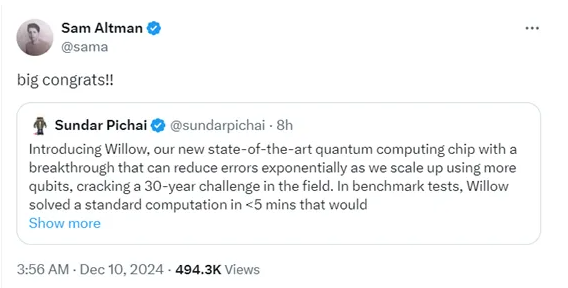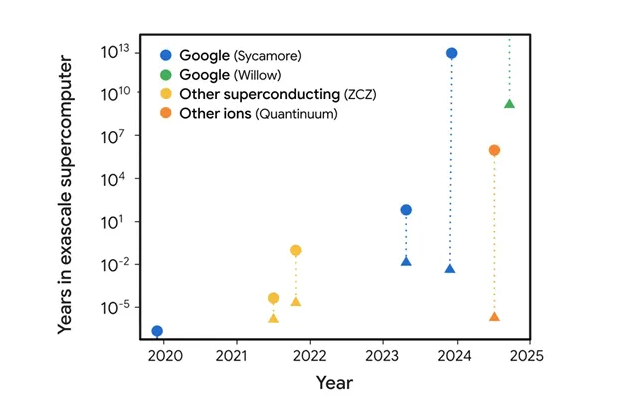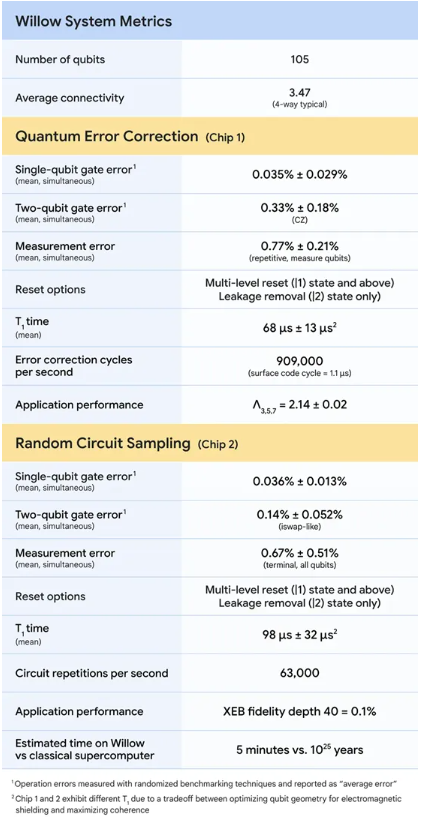The breakthrough progress of Google's Willow quantum chip marks a new era in the field of quantum computing. This achievement not only achieves the world's leading position in quantum error correction and random circuit sampling, but also demonstrates the huge potential of scientific and technological innovation, heralding the rapid development of artificial intelligence and computing technology in the future. With its "below-threshold" error rate control and exponentially decreasing error rate, Willow chip has solved the long-standing problems of quantum computing, achieved a dimensional leap in computing speed, and shortened the calculation that originally took trillions of years to For a few minutes, this is undoubtedly an important milestone in the history of technology.
Since the quantum error correction theory was proposed in 1995, scientists have been overcoming the most stubborn problem in quantum computing: how to control the calculation errors of qubits. Qubits are extremely fragile and easily affected by environmental noise, leading to information loss. It's like writing on sand, which will be erased at the slightest disturbance.
Willow chips completely change this situation. It can not only control errors when expanding qubits, but also achieve a breakthrough "below the threshold". Through careful engineering design, Willow succeeded in exponentially reducing the error rate while increasing the number of qubits. From 3x3 to 5x5 to 7x7 qubit arrays, each expansion steadily halved the error rate.
In the RCS standard test, Willow showed shocking calculation speed. A computing task that would have taken a traditional computer 10 septillion years (10^25 years) to complete now only takes 5 minutes. This is almost a dimensional jump in computing speed.
This achievement is so amazing that even OpenAI CEO Sam Altman specially forwarded his congratulations. Industry insiders are even more amazed: This may mean that an AI model with trillions of parameters can be trained in the next few seconds.

Willow's success lies not only in quantity, but also in quality. The Google team systematically solved every engineering challenge of the quantum chip at its cutting-edge manufacturing facility in Santa Barbara. From single qubit gates to dual qubit gates, from qubit reset to readout, every link has been precisely designed and collaboratively optimized.

Currently, Willow, which has 105 qubits, leads the world in both quantum error correction and random circuit sampling system benchmark tests. Its T1 time (a key indicator for a qubit to maintain an excited state) is close to 100 microseconds, which is a major progress in quantum computing technology.

It is worth noting that Willow’s computing power has triggered industry concerns about encryption security. In particular, potential threats to cryptocurrencies such as Bitcoin have begun to become a focus of discussion. Advances in quantum technology may challenge existing encryption algorithms sooner than expected.
In general, Willow is not just a chip, but also another milestone in human technological innovation. It shows us that nothing is impossible in the development of science and technology.
The success of the Willow quantum chip not only heralds the accelerated arrival of the quantum computing era, but also points out the direction for future technological development. The challenges and opportunities it brings coexist and deserve our continued attention and in-depth research. This will profoundly affect all fields and push human society into a new technological era.